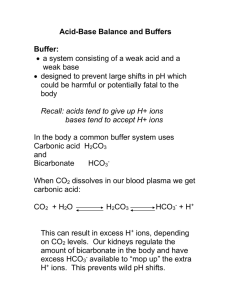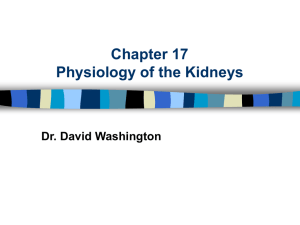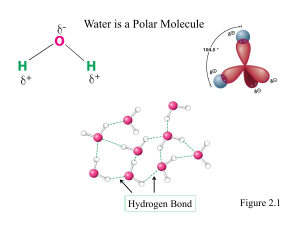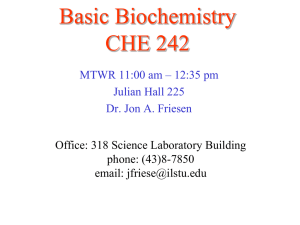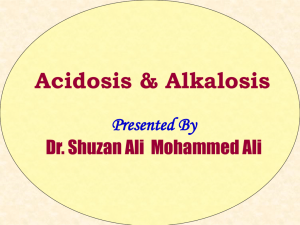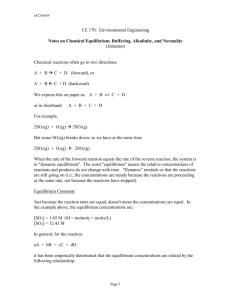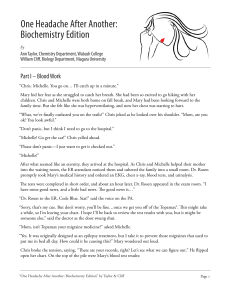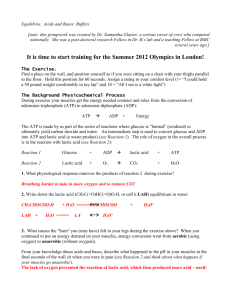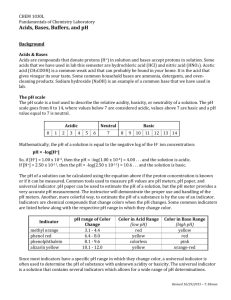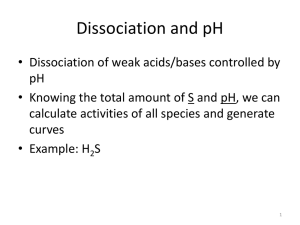Physiology Objectives 32 - U
advertisement
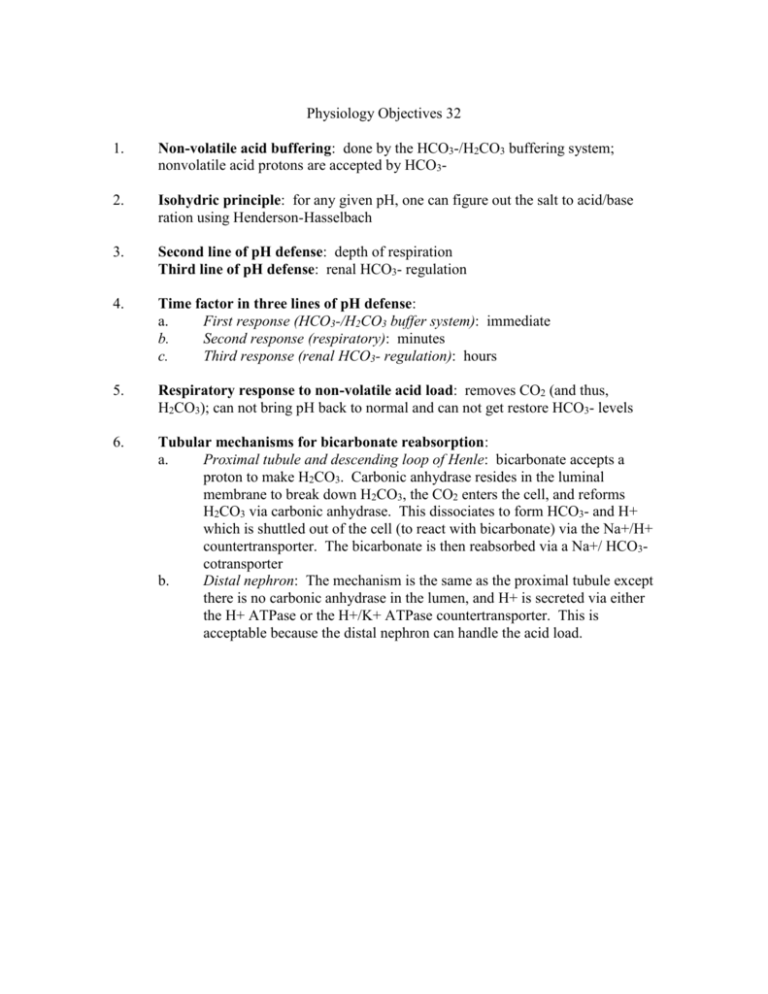
Physiology Objectives 32 1. Non-volatile acid buffering: done by the HCO3-/H2CO3 buffering system; nonvolatile acid protons are accepted by HCO3- 2. Isohydric principle: for any given pH, one can figure out the salt to acid/base ration using Henderson-Hasselbach 3. Second line of pH defense: depth of respiration Third line of pH defense: renal HCO3- regulation 4. Time factor in three lines of pH defense: a. First response (HCO3-/H2CO3 buffer system): immediate b. Second response (respiratory): minutes c. Third response (renal HCO3- regulation): hours 5. Respiratory response to non-volatile acid load: removes CO2 (and thus, H2CO3); can not bring pH back to normal and can not get restore HCO3- levels 6. Tubular mechanisms for bicarbonate reabsorption: a. Proximal tubule and descending loop of Henle: bicarbonate accepts a proton to make H2CO3. Carbonic anhydrase resides in the luminal membrane to break down H2CO3, the CO2 enters the cell, and reforms H2CO3 via carbonic anhydrase. This dissociates to form HCO3- and H+ which is shuttled out of the cell (to react with bicarbonate) via the Na+/H+ countertransporter. The bicarbonate is then reabsorbed via a Na+/ HCO3cotransporter b. Distal nephron: The mechanism is the same as the proximal tubule except there is no carbonic anhydrase in the lumen, and H+ is secreted via either the H+ ATPase or the H+/K+ ATPase countertransporter. This is acceptable because the distal nephron can handle the acid load.
